Selecting native plants for home gardens has become popular over the last decade. It’s a shift in the way we think about residential gardens. Most (not all) gardeners believe ‘traditional English garden plants’ are the only flowers for their home gardens. However, times are changing. Native plants are making an appearance in many residential gardens, either in whole or as part of the garden design. Native plants are leading the way in helping restore our natural environment and improve our local ecosystems, one garden at a time.
Advantages.
Native plants create the perfect habitat for a wide range of garden creatures, including songbirds, hummingbirds, butterflies, native bees and wasps, and flying insects. However, we often forget that native plants also provide habitat for caterpillars, ladybugs, aphids, ants, toads, and frogs, which also need native plants to survive and thrive. Native plants tend to be very low maintenance, have little or no diseases, and, once established, require little water and feeding.
Songbirds, caterpillars, native plant species and their relationship.
Let’s talk for a minute about songbirds. Many of us want songbirds in our backyards. Songbirds are fun to watch and learn about, and their flitting and fluttering around are ‘free entertainment.’ During the pandemic, birdwatching became families’ number one ‘new activity.’ Songbirds provide a great distraction from our everyday stay-at-home lives.

Songbirds, caterpillars, and native plants have a symbiotic relationship. They need each other to survive. If we take one piece of this trio away, the others fail. Here’s how it works.
- Caterpillars are the larvae of butterflies and moths, which feed almost exclusively on the foliage of native plants in the spring and summer months. As caterpillars grow and fatten up, they become a yummy food source for songbirds (caterpillars are very high in protein, or so I’m told).
- Songbirds rely on the nectar and pollen from native wildflowers as a food source.
- Songbirds utilize the leaves and stem debris of native plants to build and repair their nests.
- Native flowering plants need birds as pollinators. Birds carry pollen from one flower to another as they flit about the garden, which sparks fruit production.
- In late summer, the ripe fruit of native trees and shrubs is a steady source of food for migrating songbirds and those who stay in winter. Birds consume this ripe fruit, which is packed full of seeds. The fruit seeds pass through the bird’s digestive system and are distributed as they fly about. The seed distributed imbeds in the soil where it starts germinating, producing new native plants.
- All this fruit and seed-eating creates a lot of poop. Okay, that’s not incredible to think about; however, bird droppings are very high in nitrogen and phosphorus – you’ll have to take my word for this one – nitrogen and phosphorus are plant food. So, looking at the bird-insect-plant loop, we can now appreciate when birds poop in your gardens. Soil insects and bugs love bird poop which they break down, turning it into more poop which is then taken up by plants as food. Think of bird poop as Nature’s-very-own-natural-fertilizer.
It’s all just one big old love loop.
If you want songbirds in your yard, you need to attract caterpillars. To do this, you need to plant the species that caterpillars like to feed on, live in, and hide in.
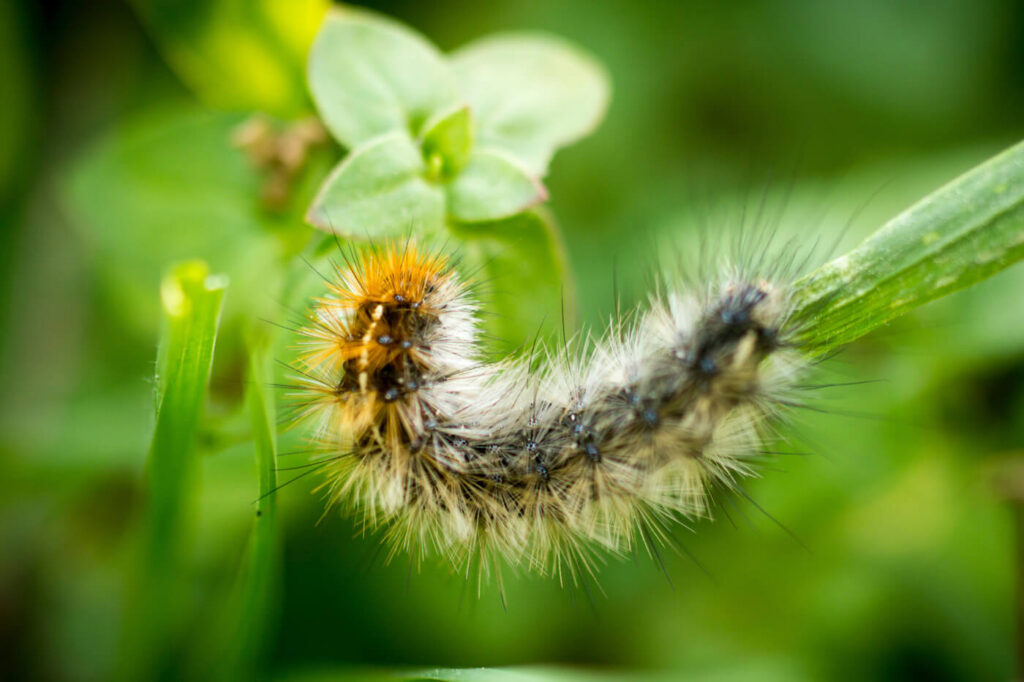
Be okay with a bit of unsightly foliage.
You must be okay with the fact that some native plants will not look ‘absolutely perfect and manicured’ throughout the growing season. There will be times, particularly in the spring, when the foliage of some yummy native plants will have holes from chewing caterpillars. Be assured most native plants with spring leave damage will re-bud fresh, new foliage during the summer to help cover up any spring damage.

If you want songbirds in your yard, you need to attract caterpillars!
Caterpillars for breakfast, lunch, and dinner! Yummy!
One songbird can eat over 300 caterpillars per day or, on average, about one caterpillar per minute. Caterpillars are high in protein and are a good source of nutrients, and in many cases, the only source of nutrients for baby birds in their first few days. If you want songbirds, you need caterpillars.
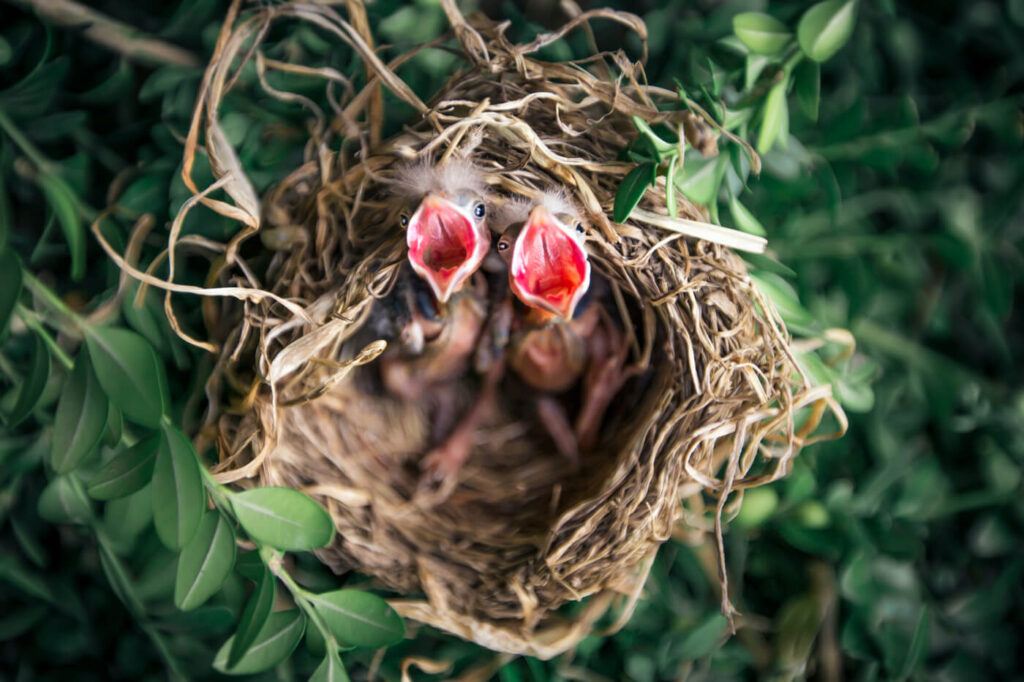
Tips to attract songbirds and caterpillars to your yard.
- Take your time cutting back your gardens in spring. Many songbirds use winter debris to build (or repair) nests in the spring. Native grasses provide the perfect building material for nests. Think of the dry, dead foliage of native grasses much like a 2-by-4, just the right building material for a new nest or as bedding for eggs. Nothing is more fascinating to than watching a bird select and then try to fly away with a very long blade of grass.
- Leave wildflowers and native grasses to stand over the winter, as the seed heads are a good source of food (seed) for winter songbirds.
- Caterpillars need leaf mulch or low-growing plants to hide in during the day and feed on at night. Having a bit of leaf mulch – the leaf litter from plants and trees – is a good thing. Instead of cleaning your gardens to bare ground or spreading thick bark mulch, try leaving leaf litter or planting low-growing spreading wildflowers to attract caterpillars.
- Reduce the amount of bark mulch you put in your gardens. In a native garden, you only need about 1 inch of bark mulch to protect your new plantings and give them a good start. After the plantings fill in, you don’t need to mulch. Let garden and tree debris be your mulch, reducing the time you spend cleaning your gardens (bonus!) and saving you money.
- I don’t clean up my gardens in the fall. Call me lazy, or call me crazy. I know caterpillars need the tall stems and stalks of wildflowers and grasses to create a safe place to pupate in fall, and I know some caterpillars pupate in ground litter. I’m good to leave my garden cleanup until May’s warm, sunny days to give caterpillars a fighting chance to over-winter. Even then, I only remove the taller stocks of native grasses (cut to about 12 inches from the ground) and cut and drop any wildflower stocks (I cut the wildflower stocks into pieces about 3 inches in length and drop them in the garden).
- No spray needed. Typically, non-native plants need more care and attention than native species. Native plants tend to have little or no diseases. Native plants are hosts (or salad bar if you like) for many moth and butterfly caterpillars.
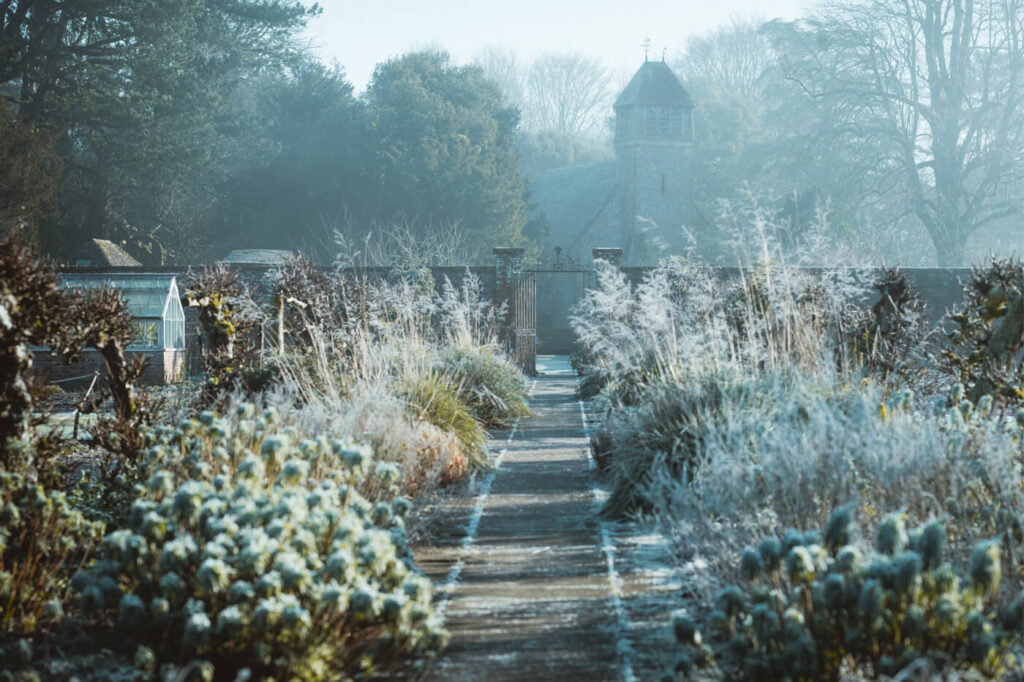
Native plants to attract moth caterpillars
Caterpillars are nature’s hotdog for birds. Not all birds eat caterpillars; however, for those who do, many prefer moth to butterfly lava. Moth caterpillars are much more edible and yummier than butterfly caterpillars in the bird world. If you are looking to attract chickadees, northern flickers, sparrows, warblers, woodpeckers, swallows, grosbeaks, blue jays, northern cardinals, and titmice, you need moth caterpillars in your gardens.
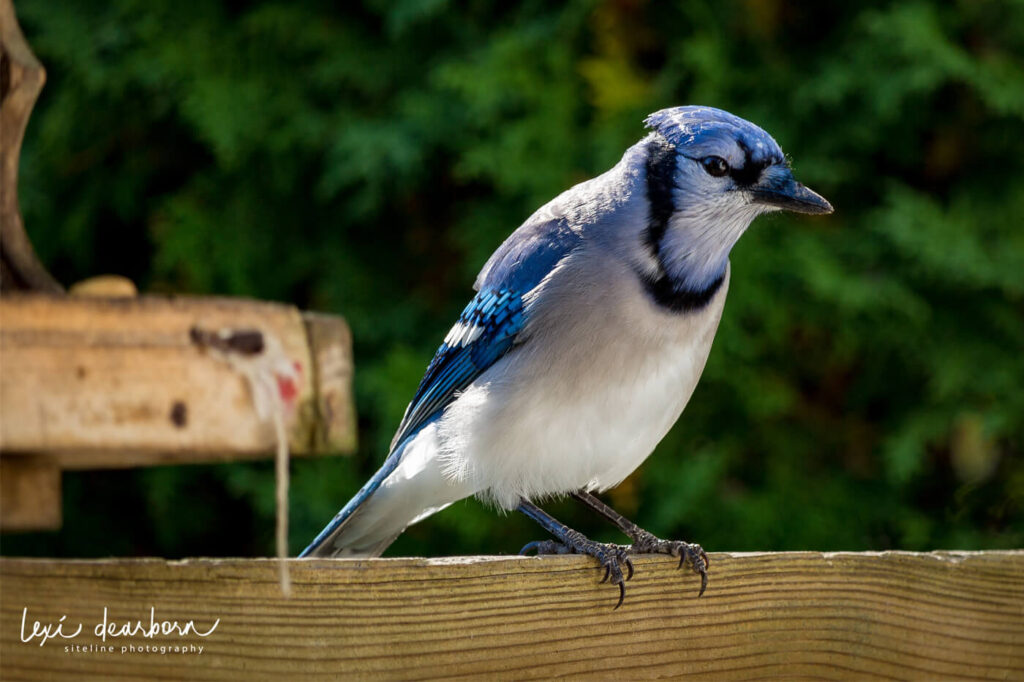
Select native species for butterflies and moths to lay their eggs, feed, and grow – here are just a few.
From ‘Nature’s Best Hope’ by Doug Tallamy
Botanical Name Common Name Butterflies and Moths Host Plants
Acer rubrum Red Maple 300 species of caterpillars
Amelanchier canadensis Serviceberry 124 species of caterpillars
Rosa spp. Rose species 135 species of caterpillars
Vaccinium spp. Blueberry 294 species of caterpillars
Aronia melanocarpa Black Chokeberry 29 species of caterpillars
Quercus spp. Oak species 557 species of caterpillars
Spirea latifolia Meadowsweet 89 species of caterpillars
Solidago spp. Goldenrod species Over 100 species of caterpillars
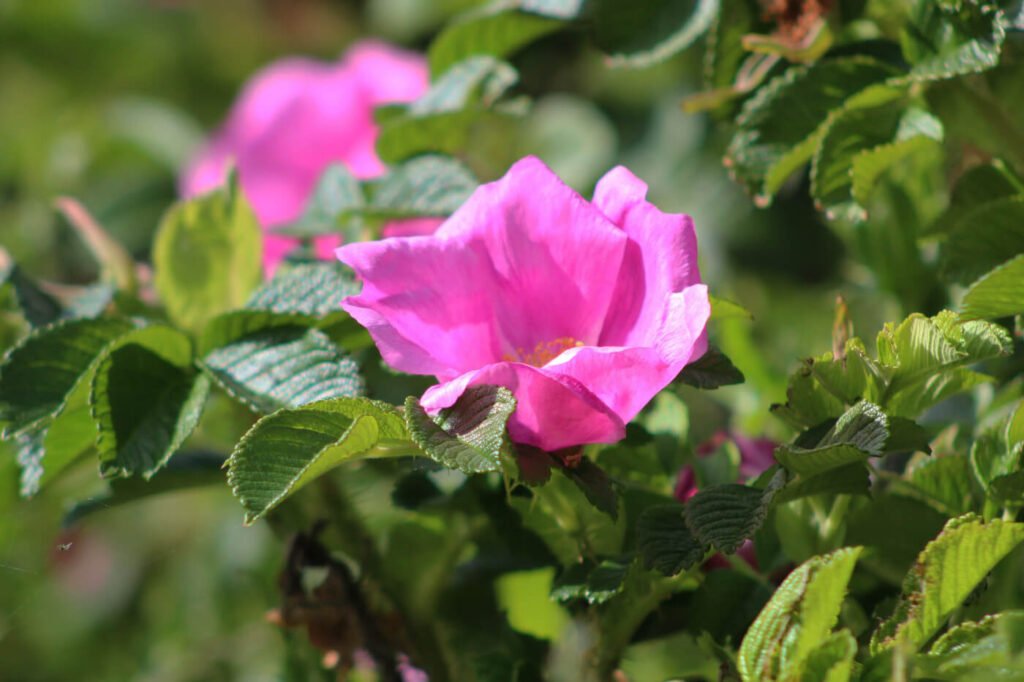
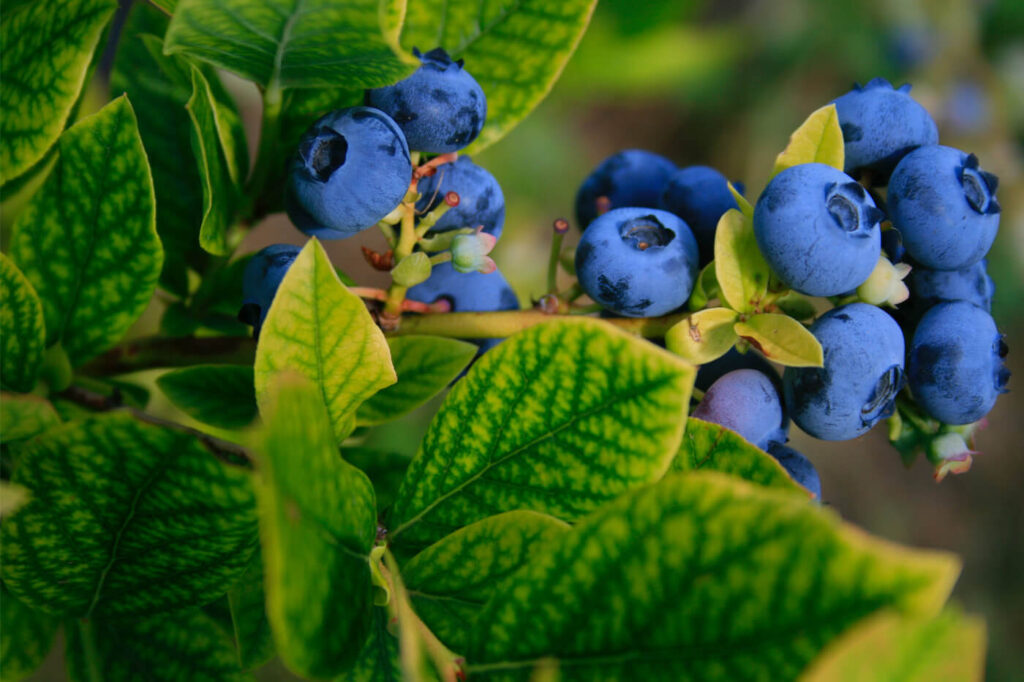
Gardeners can play a crucial role in restoring the lost habitat of host plants for many butterflies and moths. If you want songbirds in your yard, you must attract the caterpillars on which birds feed. Happy Gardening!
